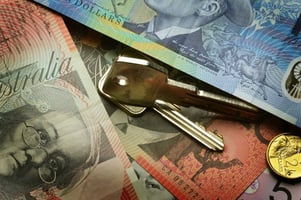Key Takeaways Refinancing activity in Australia has surged 30% year-on-year in 2025, and for good...
Refinancing in 2026: How Australian Homeowners Can Save Thousands as Rates Fall
Key Takeaways
- Falling rates in 2026 mean a strong window to refinance — many homeowners are paying more than they need to.
- Loyalty can cost: even a 0.3–0.5% rate gap on a typical mortgage adds up to thousands per year.
- External refinancing (switching lenders) usually delivers the best savings, plus cashback offers that can cover costs.
- Fixed-rate borrowers must weigh break costs carefully — sometimes wait is wiser, sometimes switching pays off.
- If you haven’t reviewed your loan in 2+ years, have 20%+ equity, or are on a rate above ~6%, now’s a good time to look.
Why loyalty can hurt your hip pocket
Banks and lenders love customers who don’t move. That inertia — the hassle of paperwork, the comfort of a familiar bank — is how some borrowers end up paying more.
- Many long-standing customers sit on rates 0.3%–0.5% higher than new-customer offers for effectively the same loan.
- On a $600,000 mortgage, a 0.5% difference is roughly $3,000 a year. Over 25 years that’s about $75,000 extra in interest for doing nothing.
Retention offers sometimes appear when you threaten to leave, but they rarely match what new customers can get from competitors. That’s why it pays to look.
What’s different about 2026
The Reserve Bank signalling rate cuts through 2026 shifts the market. Lenders lower variable rates, but not all borrowers benefit equally.
- New-customer rates tend to react faster and be more competitive.
- Existing customer rates can lag, widening the gap between staying and switching.
- Many lenders are using cashback ($2,000–$5,000) to win refinancers — that can cover most or all refinancing fees.
These conditions create a window where shopping around can produce real, immediate savings.
The real numbers — a simple example
Numbers make the opportunity clear.
- Example: $600,000 remaining at 6.5% vs refinancing to 5.64%
- Approx annual interest saving: $3,792
- Five-year saving: nearly $19,000
- Typical refinancing costs: $1,000–$3,000 (discharge, application, valuation, legal).
- A $3,000 cashback would cover those costs — meaning you start saving from day one.
Redirecting savings into extra repayments accelerates debt reduction and can shave years off your mortgage.
Fixed-rate loans: mind the break costs
If you’re in a fixed rate, the choice isn’t automatic.
- Break costs are based on the difference between your fixed rate and current wholesale rates, and the remaining term.
- When market rates fall, break costs often rise — sometimes into the tens of thousands for big loans or long fixed terms.
- The decision comes down to simple math: break cost + refinancing fees vs total future savings from the lower rate.
Ask your lender for a break-cost estimate and run the numbers. If the savings outweigh break costs (and you plan to stay in the loan long enough), switching can still make sense. If not, waiting until the fixed term ends is often wiser.
Who should seriously consider refinancing in 2026
Good candidates:
- Homeowners who haven’t reviewed their loan in 2+ years.
- Anyone on rates above ~6%.
- Borrowers with 20%+ equity (80% LVR or better) — that’s where the best rates and cashback offers appear.
- Fixed-rate borrowers coming off term — don’t automatically roll to your lender’s revert rate; shop around.
Who should wait:
- People who refinanced in the last 12–18 months unless rates have dropped big time.
- Those planning to sell within 12 months — refinancing costs usually need at least a year of savings to pay for themselves.
Internal vs external refinancing — why switching lenders usually wins
Internal (staying with your lender but switching loan type) can be easier, but it rarely wins on price.
- External refinancing (a new lender) typically brings the best rates, cashback and features.
- Feature differences matter: offset accounts, redraw, extra repayment flexibility, and portability can all affect long-term savings and convenience.
- Paperwork is similar either way — what changes is the pricing and incentives.
How to strengthen your refinance application
Make it smoother and open up better options by tidying these up before applying:
- Keep steady employment and show consistent income.
- Maintain a clean repayment history.
- Build or keep at least 20% equity where possible.
- Clean up bank statements: pause unused subscriptions, reduce discretionary spending, and avoid showing large gambling or unstable payments.
- Higher credit scores = better access to low rates.
Property type matters too — standard residential properties in established areas get more lender attention than unusual or remote properties.
A quick refinance checklist
- Check your current rate vs new-customer offers.
- Get break-cost and discharge fee estimates (if fixed-rate).
- Add up refinancing fees and cashback to find the break-even point.
- Consider loan features (offset, redraw, repayment flexibility), not just the headline rate.
- Talk to a broker if you want help comparing lenders and doing the paperwork.
The action window: don’t wait for perfection
There will always be talk of “waiting for lower rates.” In most cases, the best move is to act strategically rather than waiting for a perfect number that may never come.
Mountway Finance treats refinancing as strategy — rate is important, but so is the loan structure and features that suit your goals. The cost of investigating is time; the cost of not investigating is real money every month.




